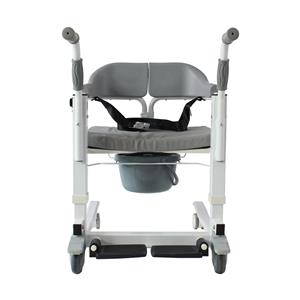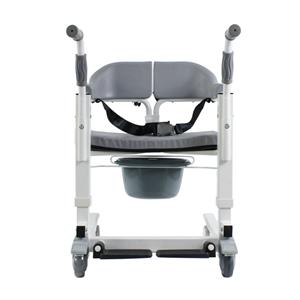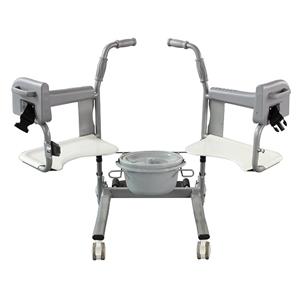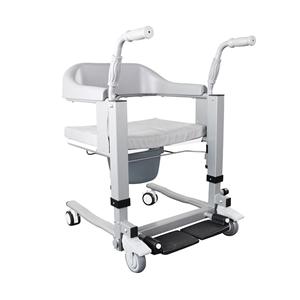Rehabilitation plan for coVID-19 discharged patients was released
In order to further improve the rehabilitation of coVID-19 discharged patients, improve their respiratory function, physical function, psychological function, ability of daily activities and social participation, and standardize rehabilitation operation techniques and procedures. The Health Commission has issued the Rehabilitation Programme for CoVID-19 discharged Patients (Trial) (hereinafter referred to as the Rehabilitation Programme (Trial)).
Rehabilitation Program (Trial) defines rehabilitation places for post-discharge patients, such as designated rehabilitation medical institutions, communities and families. At the same time, targeted assessment and treatment methods were proposed for the main respiratory, physical, psychological, daily activity and social participation disorders of coVID-19 discharged patients. In addition, special instructions were given on contrainditions for rehabilitation, the situation that patients should stop immediately in the course of treatment, the situation that patients should pay attention to when complicated with other diseases, and the problems that should be paid attention to in elderly patients, and differential requirements were put forward for the rehabilitation of patients with severe or critical diseases and mild or ordinary patients after discharge from hospital.
Rehabilitation programme for COVID-19 discharged Patients (trial)
This protocol is designed to improve respiratory, physical and psychological dysfunction in COVID-19 patients, and to standardize rehabilitation techniques and procedures.
A, goals,
Improve respiratory symptoms and dysfunction of coVID-19 discharged patients, reduce complications, relieve anxiety and depression, reduce disability rate, and maximize the recovery of daily activities and quality of life.
2. Applicable people and places
(1) The crowd. Covid-19 discharged patients.
(2) Place. Designated post-discharge rehabilitation medical institutions, isolation places, nursing homes, communities and families for patients.
Three, main content
(1) Functional disorders requiring rehabilitation treatment.
Respiratory dysfunction. Manifestations include cough, sputum, dyspnea, shortness of breath after activities, and respiratory muscle weakness and impaired lung function.
Physical dysfunction. Performance is systemic lack of power, easy fatigue, muscle ache, part can be accompanied by muscle atrophy, muscle strength drops.
Mental dysfunction. There is fear, anger, anxiety, depression and other emotional problems.
Daily life activity ability and social participation ability obstacle. Unable to undress, go to the toilet, take a shower, etc. Inability to communicate properly and return to work.
(2) Assessment of rehabilitation functions.
Respiratory function assessment. The dyspnea index scale (mMRC) was used for assessment, and pulmonary function examination was recommended in the conditional areas or institutions.
Somatic function assessment. The Borg self-perceived fatigue scale and freehand muscle strength test were used for evaluation.
Assessment of psychological functioning. Self-rating Depression Scale (SDS), self-rating anxiety scale (SAS) and Pittsburgh Sleep Questionnaire were used for evaluation.
Daily activity assessment. The improved Pap index evaluation table was used for evaluation.
The six-minute walk experiment. Patients were asked to walk as fast as possible in a straight corridor, measure a six-minute walk distance, and minimum return distance ≥ 30m.
(3) methods of rehabilitation treatment.
1. Respiratory training
Active circular breathing technique (ACBT) : A cycle consists of three parts: breath control, thoracic expansion and forced expiratory technique. The breathing control stage instructs the patient to breathe at normal tidal volume by relaxing, encourages the shoulders and upper chest to remain relaxed, the lower chest and abdomen to actively contract, and complete the breathing by diaphragmatic breathing mode. The duration of this stage should be appropriate to the patient's need for relaxation. The thoracic expansion phase emphasizes the inhalation and instructs the patient to inhale deeply into the inspiratory reserve, hold the breath for 1-2 seconds, and then exhale passively and easily. Forced expiratory phase is interspersed breath control and exhalation. Exhalation is a quick but not maximum exhalation during which the glottis should remain open. Use breath technique to remove sputum instead of coughing and reduce work of respiratory muscles. Pay attention to mask during breathing.
Breathing pattern training: including adjusting breathing rhythm (inhalation: exhalation =1:2), abdominal breathing training, lip shrinking breathing training, etc.
Respiratory rehabilitation exercise: According to the physical strength of the patient, the neck flexion and extension, chest expansion, turn, spin waist, side body, squat, lift leg, open leg, ankle pump and other series of exercise.
2. Body function training
Aerobic exercise: Prescribing aerobic exercise for patients with underlying diseases and residual functional disorders. It includes footfall, slow walk, fast walk, jogging, swimming, taijiquan, Ba Duan Jin and other forms of exercise. It is advisable to start from low intensity and step by step, every time 20-30 minutes, 3-5 times a week. For easy fatigue patients can take the form of intermittent exercise. It starts one hour after dinner.
Strength training: Use sandbags, dumbbells, elastic bands or bottled water for progressive resistance training, with 15-20 sets of movements, 1-2 sets a day, 3-5 days a week.
3. Psychological rehabilitation intervention
To design the operation therapy which can produce pleasure effect and divert attention, to achieve the purpose of regulating emotion and relieving pressure. Caregivers and rehabilitation therapists trained in professional psychology can also conduct professional psychological counseling, including mindfulness relaxation therapy and cognitive behavioral therapy. Be careful not to repeat the traumatic experience to avoid repeated injury. If there is a mental disorder, it is recommended that the psychiatric specialist intervene.
4. Daily activity training
Guide the daily activities of the patients. It is mainly the technical guidance of energy saving, which breaks down the daily life activities, such as wearing and stripping, using the toilet, bathing, etc., into small intervals, and then completes continuously with the recovery of physical strength, and gradually returns to normal.
Iv. Matters needing attention
(1) Contraindication. If the patient has one of the following conditions, it is not recommended to carry out the above rehabilitation treatment.
1. Static heart rate > 100 beats/min.
2. Blood pressure < 90/60mmhg, > 140/90 mmHg or blood pressure fluctuation exceeding 20mmHg of baseline, accompanied by obvious uncomfortable symptoms such as dizziness and headache.
3. Blood oxygen saturation ≤95%.
4. Combined with other diseases unsuitable for exercise.
(2) In case of any of the following situations in the course of treatment, the above-mentioned rehabilitation treatment shall be stopped immediately, and the treatment plan shall be reassessed and adjusted.
1. Obvious fatigue occurs and cannot be relieved after rest.
2. Chest tightness, chest pain, dyspnea, severe cough, dizziness, headache, blurred vision, palpitation, sweating, and standing instability.
(3) Patients with pulmonary hypertension, congestive heart failure, deep venous thrombosis, unstable fractures and other diseases should consult with a specialist before starting respiratory rehabilitation therapy.
(4) Elderly patients are often accompanied by a variety of basic diseases, with poor physical conditions and poor tolerance to rehabilitation training. Comprehensive evaluation should be conducted before rehabilitation treatment, and rehabilitation training should start from a small dose and proceed step by step to avoid training injuries and other serious complications.
(5) After discharge from hospital, patients with severe or critically ill diseases may be rehabilitated after discharge in designated rehabilitation medical institutions or primary medical and health institutions, depending on the actual local rehabilitation medical work. After discharge of mild and ordinary patients, appropriate rest and exercise should be taken in the community and at home to restore physical, physical and immune abilities as far as possible.




